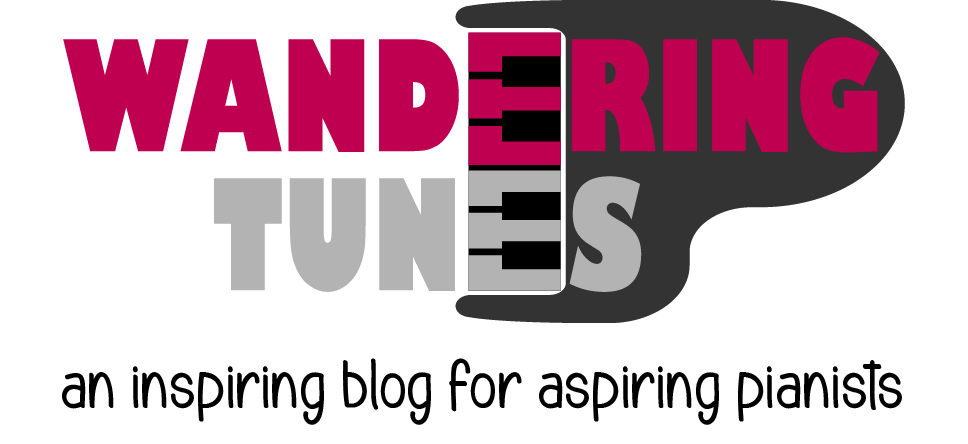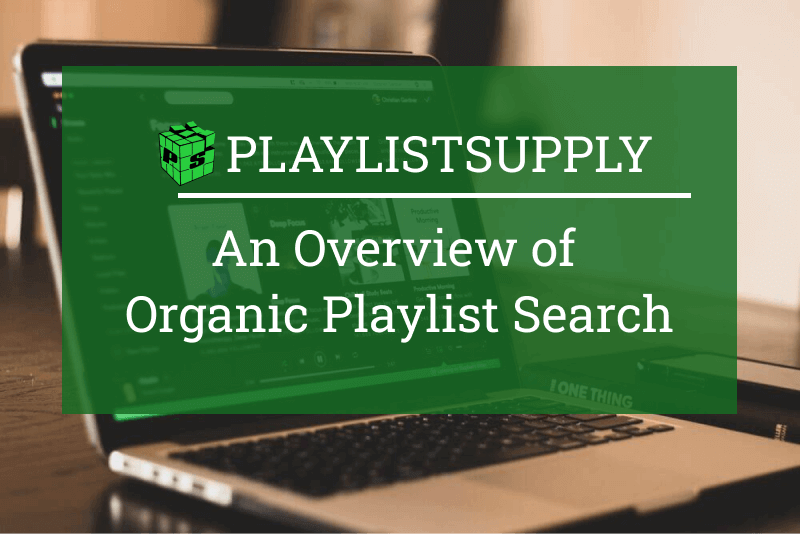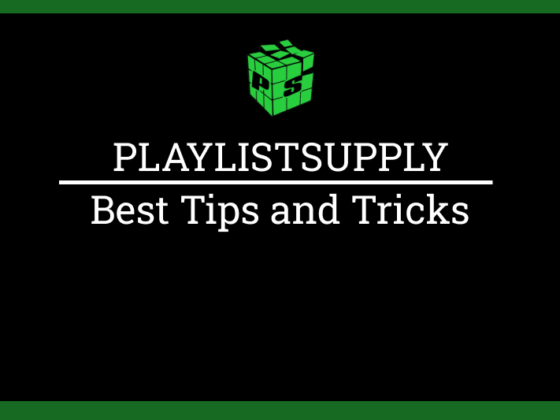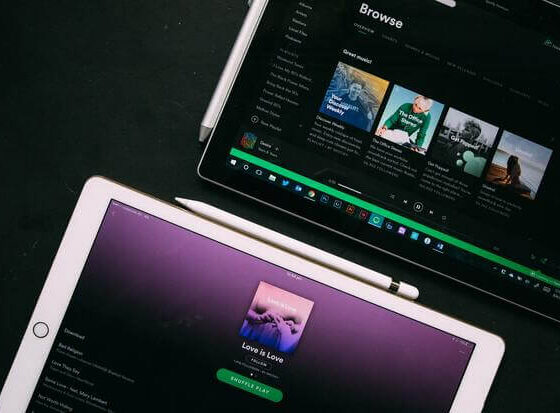This post is sponsored by Playlist Supply. All opinions are my own.
It’s no secret that today Spotify playlists play a huge role in the growth of artists. Playlists have a serious potential to increase an artist’s streams and following, which has given rise to many playlisting services that promise to get your music on impactful playlists.
If you are an artist looking to expand your reach and connect with the right audience, it’s crucial to find legit playlist curators and get on Spotify playlists.
However, one company that differs from the rest with its unique approach is Playlist Supply. PlaylistSupply was the first to offer a software solution to artists, managers, and record labels through its proprietary Spotify playlist search engine that allows to find the best playlist owners on Spotify.
Instead of running a playlist marketing campaign for them, it helps indie artists run their own campaigns, allowing them to gain full control over their playlisting strategy. Since inception, their software-driven solution to playlisting has led to numerous eerily similar tools like PlaylistHunter, PlaylistMap, PlaylistParrot, and many more..
However, PlaylistSupply continues to remain ahead of the curve through its updates and new features.
I have written a full review on Playlist Supply, so do check that out if you are curious to learn more about their software.
This post will entirely focus on Playlist Supply’s Organic Playlist Search Feature. It is a recent addition to PlaylistSupply’s music marketing tool and a real game-changer for indie artists, managers, record labels, or anyone involved in music management, and I’ll explain why in this detailed review.
From the best practices to the pricing options, I will go through everything you need to know to get the most out of this incredible feature.
Let’s start.
Overview of Playlist Supply’s “Organic Playlist Search” Feature
With Playlist Supply’s Organic Playlist Search feature, you can now directly target Spotify’s ‘Discovered On’ playlists that live on artists’ profiles.
These playlists are already receiving high streams and major source for artist discovery on the platform. The fact that Spotify is providing us with this kind of insight is incredibly underrated. Finally, a company has seized the opportunity and unlocked the potential of marketing music directly to “Discovered On” playlists to help indie artists and labels level up their game and take full advantage of the Spotify algorithm.
Despite its immense value, the way this new feature works is simple.
When you type an artist’s name into the search bar, the tool goes to the artist’s Discovered On section and extracts a wide variety of data about each playlist. From the popularity score of the playlist to the last modification date, you are presented with all the necessary information to decide if the playlist is worth submitting to.
The most important data it provides is the contact information of the playlist curator. If one of those Discovered On playlists features an e-mail or social media contact in its description, the tool will show it. Plus, it will allow you to export that information in a format of your choice (Excel, PDF, CSV, or you can save it to your playlist database within the platform).
The important thing is to run the searches with the names of artists whose music is similar to yours. If those artists were discovered on those playlists, it means you also stand a high chance to get into them.
The Importance of Discovered On Playlists
The “Discovered On” section can be found on any artist’s profile on Spotify. Just scroll down a bit and it’s right above the artist’s “about” section.
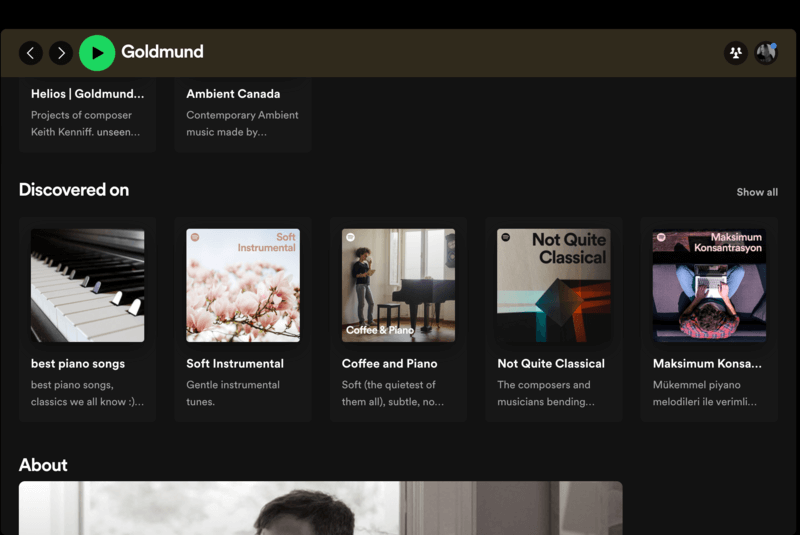
The Discovered On section shows the top playlists that the artist was “discovered on”, which are the playlists that drive a significant number of streams for the artist. What is incredibly valuable is that only the most active and influential playlists for the artist are shown here instead of all the playlists that the artist is featured in. Because this section updates on a 28-day interval, it always shows the active, quality, and high-stream generating playlists.
If you are doing playlist promotion without targeting the Discovered On playlists, I can say that you are missing out on a huge opportunity.
It’s truly the most underrated section on Spotify and leveraging the power of Discovered On playlists can significantly put you ahead of the competition, with or without the tool. However, your time is valuable, especially if you’re an indie artist doing all the work alone.
PlaylistSupply’s “Organic Playlist Search” feature will save you tons of time by allowing you to target playlists that will bring actual results.
How to Use The Organic Playlist Search Feature
You run an organic playlist search the same way you run other searches on the tool. You should only set the search criteria to “Organic Discovered” and search for an artist’s name.
To access the organic playlist search feature, first click on “Try the New Organic Search Feature” that appears below the tool.
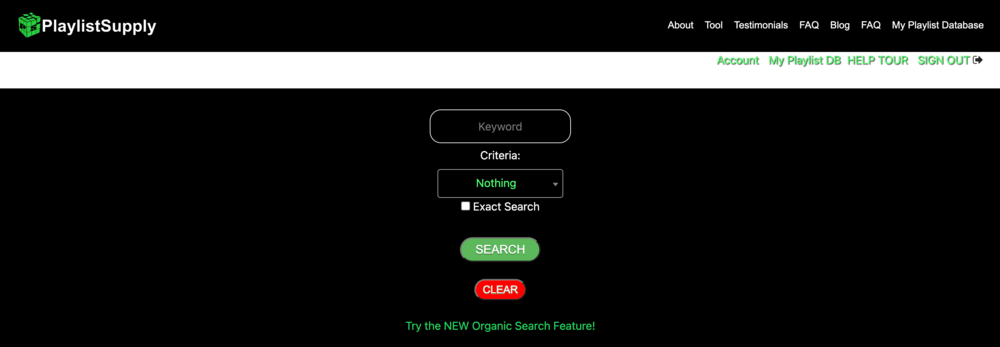
Then, type in the name of an artist in the search bar and make sure that the criteria section is set to the “organic discovered” option. After pressing the search button, the tool will show all the playlists the artist was “discovered on”.
The playlists will be shown with all the data points and contact information, if available.
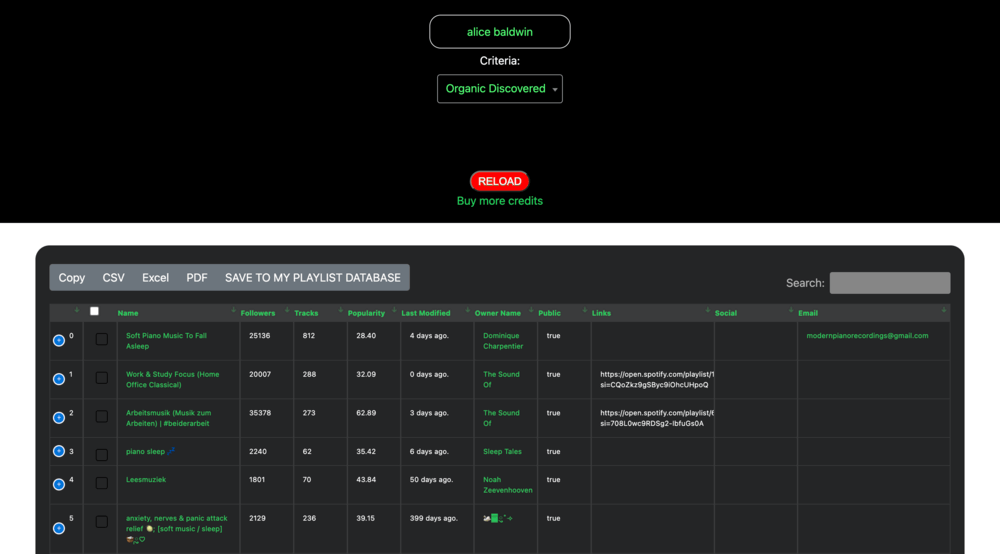
Once you get the list, you can export the playlists you want to contact to a CSV, Excel, or PDF document or you can save them to your playlist database.
Tip: Use Playlist Supply with ChatGPT to Find Similar Artists with AI
To make the most of the organic playlist search feature, it’s important to find as many similar artists as possible to expand your search options.
An effective way to find similar artists beyond your existing knowledge is to use ChatGPT. You can simply ask ChatGPT to show artists similar to you or other well-known artists in your genre. If you have recently started to release music or you do not have enough online coverage, ChatGPT likely won’t recognize your name as an artist, so try to ask about more well-known artists for better results.
Even if you know many artists in your genre, I would still suggest you ask ChatGPT just to make sure you haven’t missed an artist whose name could provide you with solid playlists to reach out to.
However, because the organic playlist search is based on a credit system, try to run your searches with the artists that can yield more effective results to avoid wasting your credits on random searches.
So, the best method I have found is to first prepare a list of similar artists combining your own industry knowledge with ChatGPT suggestions, and then run your searches with the more active and popular artist names.
Pricing
PlaylistSupply offers 4 types of memberships, and the level of access you get to the organic playlist search feature is different in each membership option.
Because the organic playlist search feature holds immense value to artists, artist managers, and labels, the company wants to make sure it is only used by those who are serious about stepping up their game of playlist promotion.
The organic playlist search feature operates on a credit system, which I will explain in a minute.
Now, let’s have a deeper look at Playlist Supply subscription types.
- PlaylistSupply Basic
- PlaylistSupply Data Tool with unlimited searches
- 0 credits for the “Organic Playlist Search” feature
- This subscription is required to access higher tiers
- $19.99/month
- PlaylistSupply Indie
- For serious playlist promotion
- PlaylistSupply Data Tool with unlimited searches
- 25 credits for “Organic Playlist Search”
- $24.99/month
- PlaylistSupply Viral for Music Industry Professionals
- For musicians, artist managers, and those who want to maximize outreach and fully leverage the potential of the organic playlist search feature
- PlaylistSupply Data Tool with unlimited searches
- 50 credits for “Organic Playlist Search”
- $39.99/month
- PlaylistSupply Record Label
- For musicians, managers, and record labels contacting a significant number of playlist curators for releases. Best for those who are dealing with huge releases, working with a lot of artists, or taking any playlist marketing to the next level.
- PlaylistSupply Data Tool with unlimited searches
- 100 credits for “Organic Playlist Search”
- $69.99/month
How Credits Work
The credit system was launched exclusively for the Organic Playlist Search feature.
If a search generates 1-5 contact information of playlist curators, a single credit will be deducted. If a search yields more than 5 playlist owner contacts, then two credits will be deducted. If a search yields no playlist contact information, then no credits will be charged.
This credit system allows you to get the most out of your money and be more intentional with your searches and time.
If you want to get more credits, you need to upgrade your plan to a higher tier.
Wrapping Up
All in all, PlaylistSupply’s Organic Playlist Search feature is a revolutionary tool that makes playlist promotion incredibly faster, easier, and more effective. By leveraging the power of Discovered On playlists, it helps artists gain placements on highly impactful playlists that are already ranking well on Spotify.
If you already have a Playlist Supply membership, go ahead and explore this tool now. If you don’t, then sign up to Playlist Supply if you want to take your playlist submission process to the next level.
Leveraging the power of Spotify playlist curators in 2024 is more important than ever before, so start investing in tools that will save you time, get you ahead of the competition, and bring actual results.
